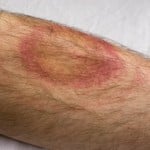Every organization develops a safety culture, be it good or bad. It is immediately observable to anyone who cares to look, and more people are particularly prospective clients and business partners. When evaluating vendors and business partners, companies with strong safety cultures will steer clear of doing business with companies with poor safety records; the risks and exposures are too great. In addition to the obvious reasons of possible injury or death to workers or the public, there is the potential for serious damage to a companys image and reputation should their vendor or subcontractor have an incident or accident. Weve all heard some of the stories recently in the news; reporters will highlight a major construction accident and all the players are named, regardless of their culpability.
Government agencies also use strong criteria to evaluate potential vendors. The State of New York has severely tightened up its safety and health requirements following the series of construction accidents that have plagued NYC in recent years.
A company can develop a comprehensive health and safety programs. It can post attention-getting signs and posters warning workers of hazards. It can also provide all manner of safety and personal protective equipment and conduct training for employees. These measures are good, but as soon as a supervisor or company owner walks onto a site ignoring the PPE requirements, all this good goes out the window. Do as I say, not as I do is not the way lead. The rules must to apply to all, without exception. Even more importantly, owners and managers should set a proper example. Professional experience has shown me that when management creates and lives a proactive safety culture, it will get the best results. Its the front-line managers and supervisors that make the difference.
And its a never ending task. Maybe your company has a few workers who constantly violate the safety rules without any real consequences or discipline. The message being sent is pretty clear: the company doesnt take safety seriously. Most people realize that the rules are there for a reason; their protection and its the law. However, there will always be a small percentage of people that just dont get it. Without enforcement of the policies, there is not only the risk of worker injury, but an erosion of the safety culture of the organization and a negative impact on morale. Plus, it is the employer and management who will be responsible for any fines or penalties handed out as well as increased insurance premiums, particularly workmans compensation. Often, they are found personally responsible. Why would anyone risk this?
The point is that paying lip service to safety wont fly anymore -- proactive is best. There are all kinds of resources to help your company succeed. OSHA even offers free services: http://www.osha.gov/dcsp/smallbusiness/consult.html and http://www.osha.gov/dte/outreach/construction_generalindustry/index.html. You may also get help from a trade or professional association that you belong to. Health and safety consulting services from companies like Emilcott who are experienced in honing in on risk and compliance can be a great investment to shift your company onto the right track.
Have you ever worked for a company that has an ineffective or sham health and safety policy? How did it make you or fellow employees feel? Was there a tipping point event that made them switch to being proactive and how did they implement a new, comprehensive program (that worked)?
Image Credit: www.lumaxart.com












